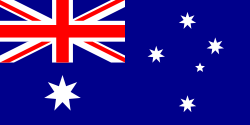The Little Mermaid (1989 film)
| The Little Mermaid | |
|---|---|
 The Little Mermaid 1997 re-release poster |
|
| Directed by | Ron Clements John Musker |
| Produced by | Ron Clements John Musker Howard Ashman |
| Written by | Fairy Tale Hans Christian Anderson Screenplay Roger Allens Ron Clements John Musker |
| Starring | Jodi Benson Samuel E. Wright Jason Marin Pat Carroll Kenneth Mars Buddy Hackett Christopher Daniel Barnes |
| Music by | Alan Menken |
| Distributed by | Walt Disney Pictures Buena Vista Distribution |
| Release date(s) | Original Release November 17, 1989 Re-release November 14, 1997 |
| Running time | 85 min. |
| Country | United States |
| Language | English |
| Budget | $40,000,000[1] |
| Gross revenue | Domestic $84,355,863 Worldwide $183,355,863[2] |
The Little Mermaid is a 1989 animated feature produced by Walt Disney Feature Animation with a pencil test beginning on September 23, 1988 and its first release on November 17, 1989 distributed by Walt Disney Pictures. This was the twenty-eighth animated feature in the Disney animated features canon. The film is based on the Hans Christian Andersen fairy tale, "The Little Mermaid." During its initial release, it grossed over $84 million in the United States and an additional $99 million internationally. [3]
The film is given credit for breathing life back into the animated feature film genre after a string of critical and/or commercial failures that dated back to the early 1980s. It also marked the start of the era known as the Disney Renaissance.
A stage adaptation of the film with a book by Doug Wright[4] and additional songs by Alan Menken and new lyricist Glenn Slater opened in Denver in July 2007 and began performances on Broadway.[5]
This film was rated G by the MPAA.
Plot
A sixteen-year-old mermaid princess named Ariel, is dissatisfied with life under the sea and curious about the human world. Ariel, with her best fish friend Flounder, collects human artifacts, and visit the surface of the ocean to visit Scuttle the seagull, who offers inaccurate and comical knowledge of human cultures. Ignoring the warnings of her father (King Triton) and the court musician (Sebastian the crab) that contact between merpeople and humans is forbidden, Ariel still longs to be part of the human world; to this end she has filled a secret grotto with all the human artifacts she has found.
Ariel and Flounder travel to the surface to watch a celebration for the birthday of Prince Eric, with whom Ariel falls in love. The birthday celebration is cut short by a massive storm, during which the ship is struck by lightning. Everyone manages to escape in a lifeboat, except for Eric who boards the burning ship to save his dog Max. Eric almost drowns, but is saved by Ariel, who drags him to the beach. She sings to him, but when he stirs awake, she dives underwater. Eric has a vague impression that he was rescued by a girl with a beautiful voice; he vows to find her, and Ariel vows to find a way to join Eric.
Triton and his daughters notice a change in Ariel, who is openly lovesick. Triton questions Sebastian about Ariel's behavior, during which Sebastian accidentally reveals the incident with Eric. Triton furiously confronts and punishes Ariel in her grotto, using his trident to destroy her entire collection of human treasures, including her prized statue of Prince Eric. After Triton leaves, a pair of eels, Flotsam and Jetsam, convince a crying Ariel that she must visit Ursula the sea witch, who can supposedly make all her dreams come true.
Ursula makes a deal with Ariel to transform her into a human for three days. Within these three days, Ariel must receive the "kiss of true love" from Eric; otherwise she will transform back into a mermaid on the third day and belong to Ursula. As payment for legs, Ariel has to give up her voice, which Ursula magically traps in a shell she wears as a locket. Ariel is transformed and, with the execption of her breasts, is naked. She is dragged to the surface by Sebastian and Flounder. There, she is washed up on a rock. .Shortly after, Scuttle helps dress her in the remains of sail. She is found by Eric, but when he learns that she cannot speak, he discards the notion that she is the one who saved his life. He helps her to the palace, where the servants think of her as a survivor of a shipwreck. Ariel spends time with Eric, and at the end of the second day, they almost kiss but are thwarted by Flotsam and Jetsam. Angered at the close call, Ursula takes the disguise of a beautiful young woman named "Vanessa" and appears onshore singing with Ariel's voice. Eric recognizes the song, and "Vanessa" casts a hypnotic spell of enchantment on Eric to make him forget about Ariel.
The next day, Ariel finds out that Eric will be married to "Vanessa" on a ship. She cries and is left behind when the wedding barge departs. Scuttle discovers Vanessa's true identity and informs Ariel. Ariel and Flounder chase the wedding barge, Sebastian informs Triton, and Scuttle is assigned to "stall the wedding." With the help of various animals, the nautilus shell around Ursula's neck is broken, restoring Ariel's voice back to Ariel and breaking Ursula's enchantment over Eric. Realizing that Ariel was the girl who saved his life, Eric rushes to kiss her, but the sun sets and Ariel transforms back into a mermaid. Ursula reverts back to her true form and she kidnaps Ariel.
Triton appears and confronts Ursula, but cannot destroy the contract Ursula made with Ariel. Triton chooses to sacrifice himself for his daughter and signs the contract. Ursula transforms Triton into a polyp. Ursula takes Triton's crown and trident and declares herself queen of the oceans, which was her plan from the beginning. Eric dives into the sea and throws a harpoon at Ursula. In her rage, she attempts to destroy him by using the trident, but Ariel attacks her, and Ursula accidentally kills Flotsam and Jetsam. Angered, Ursula subsequently transforms into gigantic proportions and stirs up a storm using the magical trident. A whirlpool is also formed, which disturbs several shipwrecks, one of which Eric later commandeers. Just as Ursula is set to use the trident to destroy Ariel, Eric turns the wheel hard to port, in effect ramming the ship's splintered bowsprit through Ursula's abdomen, killing her in a huge explosion.
When Ursula dies, her power breaks, and the polyps in Ursula's garden (including Triton) turn back into merpeople. Later, after seeing that Ariel really loves Eric, Triton willingly changes her from her mermaid form into a human using his trident. She runs into Eric's arms, and the two finally kiss. Ariel marries Eric in a wedding where both humans and merpeople are attendees.
Cast and characters
- Princess Ariel, voiced by Jodi Benson, is a 16-year old mermaid entranced with the human world.
- Ursula, voiced by Pat Carroll, is the villainess, a witch caecilian banished by Triton long before the film's events. After getting Ariel's voice, she tries to marry Eric under the identity of Vanessa (Jodi Benson).
- Sebastian, voiced by Samuel E. Wright, is a crab that leads the Atlantica orchestra. During development, he was turned from British to Jamaican.
- Flounder, voiced by Jason Marin, is Ariel's fish sidekick.
- Prince Eric, voiced by Christopher Daniel Barnes, is a prince that likes to sail, and with whom Ariel falls in love after she saves him from a shipwreck.
- King Triton, voiced by Kenneth Mars, is the ruler of Atlantica and Ariel's father.
- Scuttle, voiced by Buddy Hackett, is a seagull which Ariel considers an expert in the human world.
- Flotsam and Jetsam, voiced by Paddi Edwards, are Ursula's eel pets/henchmen.
- Grimsby, voiced by Ben Wright, is Eric's majordomo. This was Wright's final acting role before his death in 1989.
- Chef Louis, voiced by Rene Auberjonois, is the chef of Eric's house, whose favorite dish is fish and seafood in general. He tries to cook up Sebastian into a stuffed crab.
- Carlotta the Maid, voiced by Edie McClurg, is one of Eric's maids. She has a habit calling Ariel honey.
- Ariel's sisters, voiced by Kimmy Robertson and Caroline Vasicek, Aquata, Andrina, Arista, Attina, Adella, and Alana are Ariel's six older sisters.
- Herald the Seahorse, voiced by Will Ryan, is the court announcer to King Triton's palace.
- Max the Sheepdog, vocal effects by Frank Welker, is an Old English Sheepdog and Prince Eric's pet, who first appears in the film.
Comparison with the source material
This film is based on the original story (by Hans Christian Andersen) but diverges from the source material in a far more radical way than previous Disney productions such as Cinderella and Snow White, since the original story does not feature a romantic happy ending: rather than winning over the prince, the mermaid dies after throwing herself back into the ocean, dissolving into foam on the water; but she happily learns that she had an immortal soul to begin with and that after a kind of Purgatory where she will spend her time as a wandering Spirit of the Air, she will then be in heaven with God. Changing the tale to conclude with a "they lived happily ever after" involved changing the basic philosophy underlying the Disney film from that of the Andersen original. The religious elements of the plot are entirely removed: there is no desire of the film's mermaid to gain an immortal soul, there is no related desire to attend religious ceremonies (unlike Andersen's mermaid), and much of the plot has been removed involving a rival temple girl (later revealed to be a princess) that the mermaid desires to emulate, contrasting the mermaid, who is souless/unnaturally human. Andersen had strong Christian religious elements in many of his stories, including "The Snow Queen" and "The Little Match Girl", but these were removed from Disney's version.
The original story is essentially a tale without a dominant villain. The Little Mermaid is faced with an inherently unjust world, where her love for the Prince and her wish to gain an immortal soul have a chance only through terrible sacrifices, privations and risks. And the Mermaid ultimately fails, though Andersen presents her as amply deserving of the Prince's love and of gaining a soul (or, rather, demonstrating over and over again, by her courage, compassion and noble sacrifice, that she has a soul already). Unlike the film, the Sea Witch in the original tale is not a dominant villain, but rather a "technician" implementing the harsh rules of this universe. In the original story, an attack on the Witch - such as forms the climax of the film - would have been pointless, since the Witch as depicted by Andersen did not cause the Mermaid's dire predicament and had no power to resolve it. In the end the Sea Witch is revealed to be a misguided villain as the Mermaid already had a soul to begin with, and the story is really about how great trials in life and striving for a soul can lead to eternal reward in the afterlife. Following the release of this film, many other adaptations of "The Little Mermaid" have also opted for a happy ending that differs from the original fairytale.
A lesser, though significant, difference is that Andersen chose to give none of his characters a name - they are "The Little Mermaid", "The Little Mermaid's Sisters", "The Sea Witch", "The Prince", "The Temple Girl", etc. Disney, on the contrary, bestowed on all characters a specific given name. The story also has strong similarities to the opera Rusalka by Antonin Dvorak, possibly even more so than to the original Andersen tale, although this opera, like the Andersen tale, has a tragic ending.
The Disney sequel, The Little Mermaid II: Return to the Sea, centering on the daughter of Ariel and Eric, obviously could not have been a sequel to the original Andersen story.
Production
The film was originally planned as one of Disney's earliest films. Production started soon after Snow White, but was put on hold due to various circumstances.
In 1985, The Great Mouse Detective co-director Ron Clements discovered a collection of Hans C. Andersen's fairy tales while browsing a bookstore. He presented a two-page draft of a movie based on "The Little Mermaid" to CEO Michael Eisner, who passed it over, because at that time the studio was in development on a sequel to Splash. But the next day, Walt Disney Pictures boss Jeffrey Katzenberg, green-lighted the idea for possible development, along with "Oliver & Company." Unknown to the production team at the time, the idea for the movie had actually been one of Walt Disney's favorites. While in production in the 1980s, someone found Walt's Mermaid script by chance. Many of his changes to Hans Christian Andersen's original story were coincidentally the same as the changes made by Disney writers in the 1980s.[6]
That year, Clements and Great Mouse Detective co-director John Musker expanded the two-page idea into a 20-page rough script, eliminating the role of the mermaid's grandmother and expanding the roles of the Merman King and the sea witch. However, the film's plans were momentarily shelved as Disney focused its attention on Who Framed Roger Rabbit and Oliver & Company as more immediate releases.
In 1987, songwriter Howard Ashman became involved with Mermaid after he was asked to contribute to Oliver & Company. He proposed changing the minor character Clarence, the English-butler crab, to a Jamaican Rastafarian crab and shifting the music style throughout the film to reflect this. At the same time, Katzenberg, Clements, Musker, and Ashman changed the story format to make Mermaid like an animated Broadway musical. Ashman and Alan Menken (composer) teamed up to compose the entire soundtrack. In 1988, with Oliver out of the way, Mermaid was slated as the next major Disney release.
More money and resources were dedicated to Mermaid than any other Disney animated film in decades. The artistic manpower needed for Mermaid required Disney to farm out most of the bubble-drawing in the film to Pacific Rim Productions, a China-based firm with production facilities in Beijing.
Principal artists worked on the animation - Glen Keane and Mark Henn on Ariel, Duncan Marjoribanks on Sebastian, Andreas Deja on King Triton and Ruben Aquino on Ursula. Originally, Keane had been asked to work on Ursula, as he had established a reputation for drawing large, powerful figures (the bear in The Fox and the Hound, Professor Ratigan in The Great Mouse Detective.) Keane, however, was assigned as one of the two lead artists on the petite, charming Ariel and oversaw the "Part of Your World" musical number.
Another first for recent years was that live actors and actresses were filmed for reference material for the animators. Broadway actress Jodi Benson was chosen to play Ariel, and Sherri Lynn Stoner, a former member of Los Angeles' Groundlings improv comedy group, acted out Ariel's key scenes. Not all of Disney's animators approved of the use of live-action reference; one artist quit the project over the issue. An attempt to use Disney's famed multiplane camera for the first time in years for quality "depth" shots failed because the machine was reputedly in dilapidated condition.
Aside from its main animation facility in Glendale, California, Disney opened a satellite feature animation facility during the production of Mermaid near Orlando, Florida, within the still-unfinished Disney-MGM Studios Theme Park at Walt Disney World. Though the park opened to the public a year later, work at the animation studio began in May 1988, and the Disney-MGM facility's first projects were to produce an entire "Roger Rabbit" cartoon short, and contribute ink and paint support to Mermaid.
The Little Mermaid is the last Disney feature film to use the traditional hand-painted cel method of animation. Disney's next film, The Rescuers Down Under, used a digital method of coloring and combining scanned drawings -- CAPS (Computer Animation Production System), which eliminated the need for cels. A CAPS prototype was used experimentally on a few scenes in Mermaid, including the final wedding scene. Other CGI includes some of the wrecked ships in the final battle, a staircase behind a shot of Ariel in Eric's castle, and the carriage Eric and Ariel are riding in when she bounces it over a ravine. (Notice that the wheels aren't moving when it comes down for a landing.)
Glen Keane, the supervising animator for Ariel, jokingly stated on the Pocahontas: 10th Anniversary Edition DVD that his wife looks exactly like Ariel "without the fins." The character's body shape and personality were based upon that of Alyssa Milano, then starring on TV's Who's the Boss? and the effect of her hair underwater was based on footage of Sally Ride, when she was in space.
On November 15, 1989, The Little Mermaid began critics' screenings in Los Angeles and New York City. On November 17, 1989, the world premiere of The Little Mermaid took place near Orlando, Florida on all ten AMC Pleasure Island screens at Walt Disney World's newly-built Pleasure Island nightclub.
Actresses from all over the globe were considered for the role of the film's villain, Ursula the Sea Witch, from the United States names like Bea Arthur (who turned it down because she was having too much fun filming The Golden Girls) Nancy Marchand, Charlotte Rae, Elaine Stritch. From England it was Joan Collins, Jennifer Saunders (who auditioned for it) and Dawn French (who also auditioned for it). From Australia it was Rowena Wallace, who claims she was asked to audition for the role by Michael Eisner (who was in Australia on holidays, saw her performing her famous character Pat the Rat in Sons and Daughters and immedietally set out to offer her the role) himself.
Music
The Little Mermaid was considered by some as "the film that brought Broadway into cartoons".[7] Alan Menken wrote the Academy Award winning score, and collaborated with Howard Ashman in the songs.
- Songs
- "Fathoms Below" - Sailors
- "Daughters of Triton" - Triton's daughters
- "Part of Your World" - Ariel
- "Part of Your World (Reprise)" - Ariel
- "Under the Sea" - Sebastian & Sea Creatures
- "Poor Unfortunate Souls" - Ursula
- "Les Poissons" - Chef Louis
- "Kiss the Girl" - Sebastian & chorus
- "Vanessa's Song" - Scuttle, Vanessa/Ariel & Ursula*
- "Part of Your World (Finale)" - Chorus
- Note: "Vanessa's Song" is not included on any official Disney Soundtrack of The Little Mermaid. It is a reprise of "Poor Unfortunate Souls".
The compilation Classic Disney: 60 Years of Musical Magic includes "Kiss the Girl", "Under the Sea", and "Poor Unfortunate Souls" on the red disc, "Part of Your World" on the blue disc, and "Les Poissons" on the green disc. The compilation Disney's Greatest Hits includes "Kiss the Girl" on the blue disc, "Under the Sea" on the green disc, and "Poor Unfortunate Souls" and "Part of Your World" on the red disc.
Musical Themes
The Major Second (add2 or add9 in chord symbols) as a broken chord is an interval commonly used in the film's score. The best examples can be heard in the first measures of Part of Your World (Bb,C,D,F) followed by (C,D,E,G).
A common chord progression is the whole-tone step. For example (Bb chord) "Look at this trove," (C chord) "...treasures untold". The same progression is used for Ariel's aria when she sings her voice over to Ursula, and also Vanessa's aria when she seduces Eric. This theme is for Ariel's character.
The theme for Ursula is simply the melody she sings in the chorus for the words "Poor Unfortunate Souls", which is similar to the melody notes for the words "I can show you the world" (Aladdin) if it were in a major key.
The most common key signatures in the score are F major and G major.
Significance
The Little Mermaid is an important film in animation history for many reasons:
- It marked a return to the musical format that made Disney films popular from the 1930s to the 1970s, after a test run with Oliver and Company the year before. It featured seven original songs by composer Alan Menken and lyricist Howard Ashman, who also served as the film's producer.
- It was the first return to fairy tales since 1959's Sleeping Beauty.
- It had the most special effects for a Disney animated feature since Fantasia was released forty-nine years earlier. Effects animation supervisor Mark Dindal estimated that over a million bubbles were drawn for this film, in addition to the use of other processes such as airbrushing, backlighting, superimposition, and some flat-shaded computer animation.
- The Little Mermaid was a box office success and grossed over $200,000,000 worldwide.
- This film marked the final use of the Disney studio's multiplane camera, as well as one of the first uses of CAPS (Computer Animation Production System) in a Disney feature, seen in the movie's final scene. CAPS is a digital ink-and-paint and animation production system that colors the animators' drawings digitally, as opposed to the traditional animation method of tracing ink and paint onto cels (see Traditional animation). All subsequent 2D animated Disney features have used CAPS instead of ink-and-paint, with Home on the Range as the last one.
- This film signaled a renaissance in Disney animation; the films were popular and financial successes, causing Disney's feature animation department to begin significant expansion, from about 300 artists in 1988 to 2,400 by 1999. In fact, The Little Mermaid was Disney's first significant animated success since The Rescuers in 1977.
- The Little Mermaid won the 1990 Academy Award for Original Music Score. "Kiss the Girl" and "Under the Sea" were nominated for the Academy Award for Best Song; the Oscar went to "Under the Sea."
- The soundtrack, riding high on the heels of the film's popularity and the Academy, Golden Globes and Grammy Awards, went triple platinum, an unheard-of feat for an animated movie at the time.
- Ursula the Sea Witch is perhaps the first example of a cecaelia- a hybrid mythological creature not unlike mermaids that is half-human and half-octopus- appearing on the big screen. Due to the popularity and widely-known appearance of the villain, the usage of cecaelia in art (particularly online), literature, video games, and even aquatic-themed parades increased dramatically. Additionally, cecaelia are now more frequently referred to as 'sea witches'.
Box office
According to TheNumbers.com.
1989 original run
| Release Week | Gross | Rank | Total |
|---|---|---|---|
| 1 | $6,031,914 | 3 | $6,065,716 |
| 2 | $8,384,862 | 3 | $16,832,844 |
| 3 | $4,030,274 | 5 | $22,109,571 |
| 4 | $2,764,119 | 7 | $25,748,251 |
| 5 | $2,522,362 | 4 | $28,941,871 |
| 6 | $3,319,664 | 6 | $34,089,416 |
| 7 | $9,235,512 | 3 | $49,401,857 |
| 8 | $4,585,047 | 5 | $56,126,383 |
| 9 | $3,851,208 | 6 | $60,855,174 |
| 10 | $2,823,840 | 8 | $65,247,711 |
| 11 | $2,174,414 | 9 | $68,066,110 |
| 12 | $1,774,352 | 9 | $74,262,415 |
1997 re-release run
| Release Week | Gross | Rank | Total |
|---|---|---|---|
| 1 | $9,814,520 | 3 | $9,814,520 |
| 2 | $5,687,421 | 5 | $17,950,386 |
| 3 | $3,990,314 | 8 | $23,947,879 |
Awards
Academy Awards
- Two Wins
- Best Original Score
- Best Original Song - "Under the Sea"
- One Nomination
- Best Original Song - "Kiss the Girl"
Golden Globe Award
- Two Wins
- Best Original Score - Motion Picture
- Best Original Song - Motion Picture - "Under the Sea"
- Two Nominations
- Best Motion Picture - Comedy/Musical
- Best Original Song - Motion Picture
Grammy Award
1991 - Best Song Written Specifically for a Motion Picture or for Television: Alan Menken (composer) Howard Ashman (lyricist) for "Under the Sea"
Other awards
- BMI Film & TV Awards
- One Win: BMI Film Music Award
- Los Angeles Film Critics Association
- One Win: Best Animation
- Golden Screen Awards
- One Win: Golden Screen Award
- Golden Reel Awards
- One Win: Best Sound Editing - Animated Feature
- Young Artist Award
- One Win: Best Family Motion Picture - Adventure or Cartoon
In April 2008- almost 20 years after the film's initial release in 1989- Yahoo! users voted "The Little Mermaid" as #14 on the top 30 animated films of all time. Later, when Yahoo! updated the list in June of the same year, the film remained on the list but dropped six slots to end at #20. (Only three other 2D Disney animated films- "Aladdin", "Beauty and the Beast", & "The Lion King", respectively- scored above it in the poll even after the update.)[8]
Theatrical release history
American, Canadian, and Mexican release dates
- November 17, 1989 (original release)
- November 14, 1997 (re-release)
Worldwide release dates
 Australia: June 20, 1990
Australia: June 20, 1990 U.K.: October 12, 1990
U.K.: October 12, 1990 Italy: November 9, 1990
Italy: November 9, 1990 Denmark: November 16, 1990
Denmark: November 16, 1990 Belgium: November 20, 1990
Belgium: November 20, 1990 France: November 28, 1990
France: November 28, 1990 Germany: November 29, 1990
Germany: November 29, 1990 Norway: November 29, 1990
Norway: November 29, 1990 Finland: November 30, 1990
Finland: November 30, 1990 Sweden: November 30, 1990
Sweden: November 30, 1990 Greece: December 2, 1990
Greece: December 2, 1990 Spain: December 5, 1990
Spain: December 5, 1990 Netherlands: December 21, 1990 *
Netherlands: December 21, 1990 * Turkey: January 11, 1991
Turkey: January 11, 1991 Hong Kong: January 24, 1991
Hong Kong: January 24, 1991 Japan: July 20, 1991
Japan: July 20, 1991 South Korea: December 21, 1991
South Korea: December 21, 1991 Costa Rica: February 15, 1992
Costa Rica: February 15, 1992 Guatemala: February 15, 1992
Guatemala: February 15, 1992 Saudi Arabia: October 30, 1993
Saudi Arabia: October 30, 1993 India: April 11, 1994
India: April 11, 1994 Ethiopia: January 14, 1995
Ethiopia: January 14, 1995 Israel: May 3, 1995
Israel: May 3, 1995 Kenya: December 18, 1996
Kenya: December 18, 1996 Republic of Ireland: May 16, 1997
Republic of Ireland: May 16, 1997 Thailand: October 15, 1997
Thailand: October 15, 1997 Kuwait: September 23, 1998 *
Kuwait: September 23, 1998 * Turkey:October 23, 1998 (re-relase)
Turkey:October 23, 1998 (re-relase) Bulgaria: June 1, 1999
Bulgaria: June 1, 1999 Palestine: September 5, 2002
Palestine: September 5, 2002 Russia: October 28, 2006
Russia: October 28, 2006
Dubbings
Quebec French
- Violette Chauveau : Ariel
- Dominique Faure : Ariel (Singing)
- Pierre Auger : Eric
- Ronald France : Sebastian
- Michel Comeau : Sebastian (Singing)
- Elizabeth Chouvalidzé : Ursula
- Inti Chauveau : Flounder
- Yves Massicotte : King Triton
- Bruno Laplante : Louis
- Éric Gaudry : Flotsam & Jetsam
- Luc Durand : Scuttle
- Michel Max Mailbot : Grimsby
- Arlette Sanders : Carlotta
- Marc Labrèche : Seahorse
Spanish
- Gabriela León - Ariel
- Isela Sotelo - Ariel (Singing)
- Michael Cruz - Sebastian
- Serena Olvido - Ursula
- Guillermo Romano - King Triton
- Demian Bichir - Eric
- Víctor Mares - Grimsby
- Rigoberto Jiménez - Flounder
- Demian Bichir - Louis
- Alejandro Abdalah - Flotsam / Jetsam
- Amparo Logreyra - Carlota
- Víctor Mares - Scuttle
French (1989 Dubbing)
- Claire Guyot : Ariel
- Thierry Ragueneau : Eric
- Henri Salvador : Sebastian
- Micheline Dax : Ursula
- Boris Roatta : Flounder
- Jacques Deschamps : King Triton
- Gérard Rinaldi : Louis
- Luq Hamet : Seahorse
- Vincent Grass : Flotsam & Jetsam
- Emmanuel Jacomy : Scuttle
- Claude Chantal : Carlotta
- René Bériard : Grimsby
French (1998 Dubbing)
- Claire Guyot : Ariel
- Marie Galey : Ariel (Singing)
- Bruno Choel : Eric
- Christophe Peyroux : Sebastian
- Micheline Dax : Ursula
- Julien Bouanich : Flounder
- Jean Davy : King Triton
- Miguel Angel Jenner : Louis
- Éric Métayer : Seahorse
- Marc Alfos : Flotsam & Jetsam
- Gérard Hernandez : Scuttle
- Claude Chantal : Carlotta
- Jacques Herlin : Grimsby
Castilian
- Graciela Molina - Ariel
- María Caneda - Ariel (Singing)
- Juan Perucho - Sebastian
- Vicente Borland - Sebastian (Singing)
- Matilde Conesa - Ursula
- Helen Quiroga - Ursula (Singing)
- Claudio Rodríguez - King Triton
- David Robles - Eric
- Rafael de Penagos - Grimsby
- Nacho Aldeguer - Flounder
- Miguel Ángel Jenner - Louis
- Salvador Aldeguer - Flotsam / Jetsam
- Dolores Cervantes - Carlota
- Eduardo Moreno - Scuttle
Home video release history
The film's home video debut was in May 1990 with a VHS and a Laserdisc release, part of the Walt Disney Classics line, that became that year's top-selling title on home video, with over 10 million units sold (including 7 million in its first month).[9] It was one of the highest-selling home video titles ever at the time.
Following the re-release on theaters, a new VHS was released in March 1998 as part of the Masterpiece Collection. The VHS sold 13 million units and ranked as the 3rd best-selling video of the year.[10][11]
The Little Mermaid was released in a Limited Issue "barebones" DVD in 1999, with a standard video transfer and no substantial features. The film was re-released on DVD on October 3, 2006, as part of the Walt Disney Platinum Editions line of classic Walt Disney animated features. Deleted scenes and several in-depth documentaries were included, as well as the Academy Award-nominated short film intended for the shelved Fantasia 2006, The Little Matchgirl.[12] On its opening day the DVD sold 1.6 million units,[13] and in its first week, over 4 million units, making it the biggest animated DVD debut for October. On its first three months out, the DVD had already sold 6.5 million units and ranked as one of the year's top ten selling DVDs.[14] The Platinum Edition DVD will be released as part of a "The Little Mermaid Trilogy" boxed set on December 16, 2008.
Sequels and Spin offs
Note: John Musker and Ron Clements have no affiliation with these sequels/spin offs.
- The animated series prequel of the film titled The Little Mermaid premiered in late 1992 on the CBS television network. Each episode focuses on Ariel's adventures before the events of the original film, and 31 episodes were made in all.
- A series of shorts starring Sebastian were aired as part of the Disney animated series Marsupilami.
- A direct-to-video sequel, titled The Little Mermaid II: Return to the Sea, was released on September 19, 2000. The plot focuses on Ariel's daughter Melody who longs to be a part of the ocean world.
- A direct-to-video prequel, titled The Little Mermaid: Ariel's Beginning, was released on August 26, 2008. The story is set before the events of the original film, in which King Triton has banned music from Atlantica.
- Ariel, Sebastian, Flounder, King Triton, Ursula, Prince Eric, Scuttle and Chef Louie are "guests" in House of Mouse. Ursula appears as one of the leading villains in Mickey's House of Villains. Ariel, Prince Eric and Ursula also appear in Mickey's Magical Christmas: Snowed in at the House of Mouse.
- The Little Mermaid is featured as a playable world in the Kingdom Hearts Series known as Atlantica. Characters from the film include, Ariel, Sebastian, Flounder, King Triton, Prince Eric, Ursula, Flotsam and Jetsam.
Broadway
A pre-Broadway stage version premiered in September 2007 in Denver, Colorado, at the Ellie Caulkins Opera House, with music by Alan Menken, new lyrics by Glenn Slater, and a book by Doug Wright. The musical began performances on Broadway at the Lunt-Fontanne Theatre on November 3, 2007 and officially opened on January 10, 2008.[15] The show features Sierra Boggess as Ariel, Norm Lewis as King Triton, Sherie Rene Scott as Ursula, Eddie Korbich as Scuttle, Tituss Burgess as Sebastian, Sean Palmer as Prince Eric, Jonathan Freeman as Grimsby, Derrick Baskin as Jetsam, Tyler Maynard as Flotsam, Cody Hanford and J.J. Singleton as Flounder, and John Treacy Egan as Chef Louis.
The show became the most successful tryout for a Disney musical by selling nearly 95,000 seats.[16]
Reviews of the show have varied widely; The New York Times called it "charm free", while Time described it as "ravishing." [17]
Video games
Four games were released based on the film: The Little Mermaid, by Capcom for the Nintendo Entertainment System and Game Boy, The Little Mermaid: Magic in Two Kingdoms, by Buena Vista Games, released for the GBA, Ariel the Little Mermaid by Sega for the Mega Drive/Genesis, Game Gear and Master System. This also includes the feature of playing as Triton. The most recent game released was Disney's The Little Mermaid Ariel's Undersea Adventure which was released on the Nintendo DS on October 2, 2006. The Little Mermaid was also featured on Kingdom Hearts, a game featuring heavy usage of scenes and characters from famous Disney movies, as well as many of the original voice actors. A Little Mermaid hand-held LCD game from Tiger Electronics was also released.
Theme parks
Ariel makes regular appearances in the Disney theme parks, having a special location called Ariel's Grotto at the Magic Kingdom and in Disneyland Park. At Disney's Hollywood Studios, the show "Voyage of The Little Mermaid" is performed daily. The show opened up on January 6, 1992. Ariel is live sung. Puppets portray Ursula, Sebastian, Flounder, and the rest of the fish. With Lasers, Lights, Film Projection, and Special Effects, the show has become a favorite to all visitors. It is currently the second-longest running show at a Walt Disney World Theme Park.
The Little Mermaid ride will be opening at Disney's California Adventure in late 2010/early 2011, which is a re-designed version of the unbuilt attraction for Disneyland Paris.
Disney on ice
- From 1990 - 1996, Ariel, Sebastian, and Ursula were featured in the 10th Anniversary production of "Walt Disney's World On Ice".
- Disney on ice began it's touring production of "The Little Mermaid" in Fall 1998. The show toured nationally & internationally from 1998 - 2001.
- In 1995, a shortend version of the story was presented in the Disney on ice production "Mickey & Minnie's Magical Journey", in 2002 in "Princess Classics", and in 2006 in "Princess Wishes". All 3 shows are currently on tour nationally & internationally.
Allegations of sexual innuendo
In the film, King Triton lives in a castle of gold, along with his daughters. The castle is displayed in the artwork for the cover for the Classics VHS cassette when the film was first released on video. Close examination of the artwork, as well as the film, shows an oddly shaped structure on the castle, closely resembling a penis. Many have alleged that the artwork is an intentional act by a disgruntled animator. However, Disney, and the actual person who designed the cover, both insist it was an accident, resulting from a late night rush job to finish the cover artwork. The questionable object does not appear on the cover of the second releasing of the movie.[18]
The second allegation is that a clergyman is seen with an erection during a wedding scene, specifically the scene in which a brainwashed Prince Eric is about to marry a disguised Sea Witch. The clergyman is a short man, dressed in Bishop's clothing, and a small bulge is slightly noticeable in a few of the frames that are actually later shown to be the stubby-legged man's knees, but the image is small and is very difficult to distinguish. The combined incidents led an Arkansas woman to file suit against The Walt Disney Company in 1995, though she dropped the suit two months later.[19]
Allegations of sexual innuendo exist for several other Disney movies, including The Lion King, Aladdin, Who Framed Roger Rabbit, and Disney's 1999 original releases of The Rescuers, which were recalled due to the discovery of two photographs of a nude woman in the background of two frames of the movie.[20]
See also
- Disney special editions
- Mermaids in popular culture
- The Little Mermaid: Ariel's Beginning
- The Little Mermaid Broadway Musical
- The Little Mermaid II: Return to the Sea
- List of Disney theatrical animated features
- Disney Villians
References
- ↑ Stewart, James B. (2005). DisneyWar, p. 104. ISBN 0-684-80993-1. Simon & Schuster. Accessed June 4, 2007.
- ↑ "Re-releases of The Little Mermaid", Box Office Mojo. Retrieved on 2008-11-22.
- ↑ The Little Mermaid (1989) at Box Office Mojo. Retrieved April 28, 2007.
- ↑ Q&A With Grey Gardens Playwright Doug Wright - New York Magazine
- ↑ Playbill Features: STAGE TO SCREENS: Chatting with Grey Gardens and Little Mermaid Librettist Doug Wright
- ↑ DVD - Making of Featureette
- ↑ Aladdin Platinum Edition, Disc 2: Alan Menken: Musical
- ↑ http://movies.yahoo.com/summer-movies/Kung-Fu-Panda/1809826133/photos/358/9268/ Making the Grade: Yahoo Users' Top Rated Animated Films photos on Yahoo! Summer Movie Guide (June 25th, 2008)
- ↑ THE NEW SEASON: HOME ENTERTAINMENT; 'Beauty' Was Big, but Make Way for 'Aladdin' - New York Times
- ↑ Mickey-Mouse.com Press Release Page
- ↑ OnVideo: VidNews Archives
- ↑ The Little Mermaid: Platinum Edition - DVD Press Release - UltimateDisney.com
- ↑ Record Starts for X-Men and Mermaid - ComingSoon.net
- ↑ Top DVD Sellers for 2006 - Video Business
- ↑ Playbill News: Mermaid Will Resume Nov. 29 and Will Officially Flip Her Fins Jan. 10
- ↑ On point: Fans more "in the swim" than critics - The Denver Post
- ↑ The Little Mermaid | Disney On Broadway | Official Website for Tickets & Information
- ↑ snopes.com: Little Mermaid Phallus
- ↑ snopes.com: Little Mermaid Minister
- ↑ snopes.com: Disney (Disney Films)
External links
- The Little Mermaid - Official The Little Mermaid Platinum Edition DVD site
- The Little Mermaid Special Edition - Product page on DisneyVideo.com
- The Little Mermaid at the Internet Movie Database
- The Little Mermaid at Rotten Tomatoes
- The Little Mermaid at Box Office Mojo
- The Little Mermaid at the Big Cartoon DataBase
- Original drawings of The Little Mermaid - Disney-Archive
|
|||||||||||||||||
| Preceded by "Let the River Run" from Working Girl |
Academy Award for Best Original Song ("Under the Sea") 1989 |
Succeeded by "Sooner or Later (I Always Get My Man)" from Dick Tracy |
|
|||||||||||||||||